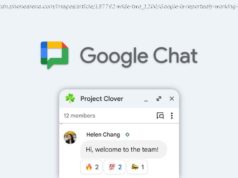As officials prepare for possible havoc caused by Monday’s solar eclipse, viewing it via your Facebook account may be a safer option.
Authorities in Oregon are warning people not to watch Monday’s solar eclipse from the side of the road, concerned about jammed freeways and car crashes caused by distracted drivers.
In California, officials who run the state’s electric grid are preparing for a loss of solar power that could reach 67 percent. North Carolina could see a 90 percent drop in solar power supply.
Elsewhere across the U. S., consumers who bought special sunglasses are being urged to make sure they are truly ‚eclipse-proof, ‚ lest they risk severe eye damage.
As Americans from coast to coast await the coming total eclipse with a mix of excitement and dread, there is an alternative place to watch the solar spectacle: Facebook .
NASA will have a page dedicated to showing the event from a broad range of vantage points — including on the ground, aboard aircraft and even from the International Space Station.
The NASA coverage will feature a live, high-resolution, 360-degree view of the eclipse, using Facebook’s Live 360 video tool, from Charlestown, South Carolina, starting at around 1: 15 p.m. EDT until around 4: 15 p.m. ET.
Consumers can access the event either directly on the Facebook website or on their TV using the Facebook app.
And NASA isn’t the only group getting charged up for the social media version of the event.
The American Astronomical Society, based in Washington, has a helpful map of the path of the eclipse on its Facebook page, which has 106,000 followers. (CNBC will also be streaming the eclipse on CNBC.com and on Facebook live from noon until 4 p.m. EDT.)
The Los Angeles Astronomical Society has helpful links on its Facebook page.
One points to a „Precision Eclipse Computation“ page designed by mathematician and computer scientist Stephen Wolfram of Wolfram Research. It includes a detailed guide of what to expect based on where and when a person views the event.
Astronomy Magazine has instructions on how to submit photos to its Eclipse Megamovie Project, whose first images will be available Monday night.
The Las Vegas Astronomical Society has information on optimum camera settings for capturing great photos of the event.
Monday will see the first full solar eclipse to cross the U. S. mainland in 99 years.






